What's New
Displaying results 2551 - 2560 of 4052

Resource | Publications,
The WHO HIV Department began its work on PrEP in 2009 to help countries prepare for potential implementation of PrEP, should the trials show sufficient safety and effectiveness. With its partner UNAIDS, and in partnership with Georgetown University School of Law, WHO convened a number of country and regional consultations to address issues of PrEP implementation and to help countries think through the process and the implications.
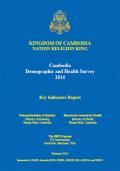
Resource | Publications,
The 2014 CDHS, the fourth of its kind, follows the CDHS surveys that were successfully conducted in 2000, 2005, and 2010. The 2014 CDHS provides data to monitor the population and health situation in Cambodia. Specifically, the 2014 CDHS collected information on a broad range of demographic, health, and social issues such as household characteristics, utilization of health services, maternal and child health, breastfeeding practices, early childhood mortality, maternal mortality, nutritional status of women and young children, fertility levels and preferences, marriage, awareness and use of family planning methods, sexual activity, and awareness and behavior regarding AIDS and other sexually transmitted infections. In the follow-up visits in about one-sixth of sampled clusters, UNCEF organized the collection of blood, urine, and stool specimens among women and children for micronutrient testing.
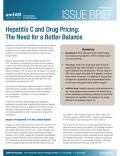
Resource | Publications,
In this brief, we review drug pricing for new hepatitis C medications and pose basic questions of fairness and medical ethics. Although we focus on Gilead and its hepatitis C drug sofosbuvir, the issues we highlight are broadly applicable to other manufacturers of hepatitis C medications.
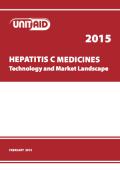
Resource | Publications,
This landscape analysis surveys the current state of technologies for the treatment of hepatitis C virus (HCV), as well as market dynamics that affect the affordability and accessibility of HCV therapeutics. HCV treatment falls within the ambit of UNITAID’s mission because it is a major HIV coinfection and a leading cause of morbidity and mortality among people living with HIV. Strategic Objective 3 of the UNITAID Strategy 2013−2016 specifically refers to viral hepatitis, notably hepatitis B and C.
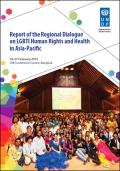
Resource | Publications,
The report documents the presentations and discussions made during the Regional Dialogue on LGBTI Human Rights and Health in Asia-Pacific held from 25–27 February 2015 at the United Nations Conference Centre in Bangkok, Thailand. The Regional Dialogue, which brought together more than 200 representatives from over 30 countries, was an important step in building consensus and strengthening the movement for legal and social change to advance the human rights of LGBTI people in Asia and the Pacific. It aimed to identify opportunities, build trust, and promote innovation and action. It also actively encouraged private sector involvement in LGBTI rights and provided a forum for LGBTI community organizations and development partners to forge strategic linkages in order to take their agendas forward.
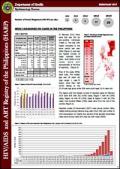
Resource | Fact Sheets,
In February 2015, there were 646 new HIV Ab sero-positive individuals (Table 1). This was 33% higher compared to the same period last year (486) [Figure 1], and was the highest number of cases reported since 1984. Most (93%) of the cases were still asymptomatic at the time of reporting (Figure 3). Most of the cases (96%) were male. The median age was 28 years old (age range: 1 year-73 years). More than half (51%) belong to the 25-34 year age group while 28% were youth aged 15-24 years old.
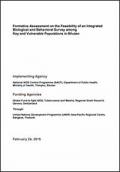
Resource | Publications,
A cross-sectional design with qualitative and quantitative methods was used for this formative assessment that was aimed at informing the development of the IBBS survey among key populations, i.e., FSW, MSM, transgender women, Drug Users (DU), and PWID, and vulnerable populations (High-risk women—HRW, truck and taxi drivers, and uniformed services) in priority sites in Bhutan.
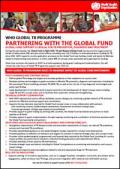
Resource | Fact Sheets,
During the past decade, the Global Fund to Fight AIDS, TB and Malaria (Global Fund) has become the largest external funder of tuberculosis (TB) care and control efforts, providing over US$ 3.9 billion in international donor funding for TB since 2002. WHO supports country application processes to the Global Fund new funding model and assists its Member States in implementing interventions. In 2014, nearly 80% of concept notes submitted were approved for funding.
Given that countries rely heavily on WHO to provide assistance during grant making and implementation, this will remain the main focus of Global TB Programme support over 2015-16.
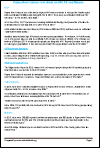
Resource | Reviews and Snapshots,
Papua New Guinea is one of the twelve highest HIV burden countries in Asia and the Pacific region with an estimated 32,000 people living with HIV in 2013. There were an estimated 2,200 new HIV infections – a 31% decline since 2005. As of June 2014, 16,773 people were receiving antiretroviral therapy, and prevention of mother-to-child transmission coverage was 41% (35%-47%) in 2013.
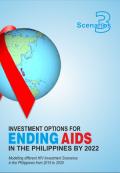
Resource | Publications,
This paper is an offshoot of the 2014 AIDS Epidemic Model (AEM) Report endorsed by the Department of Health in August 2014. The AEM report utilized a set of tools (AEM workbooks) that provided techniques for estimating and measuring the impact of past and future programs on the HIV epidemic in the Philippines (1970-2050).





